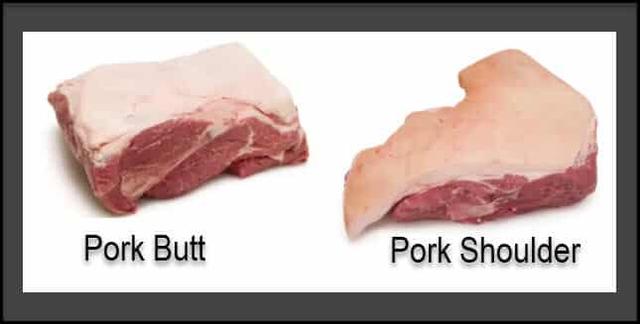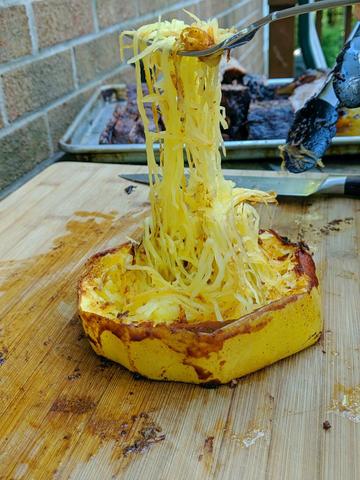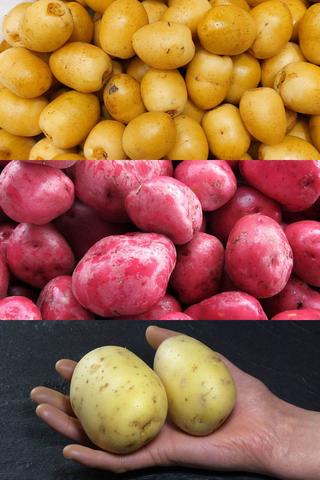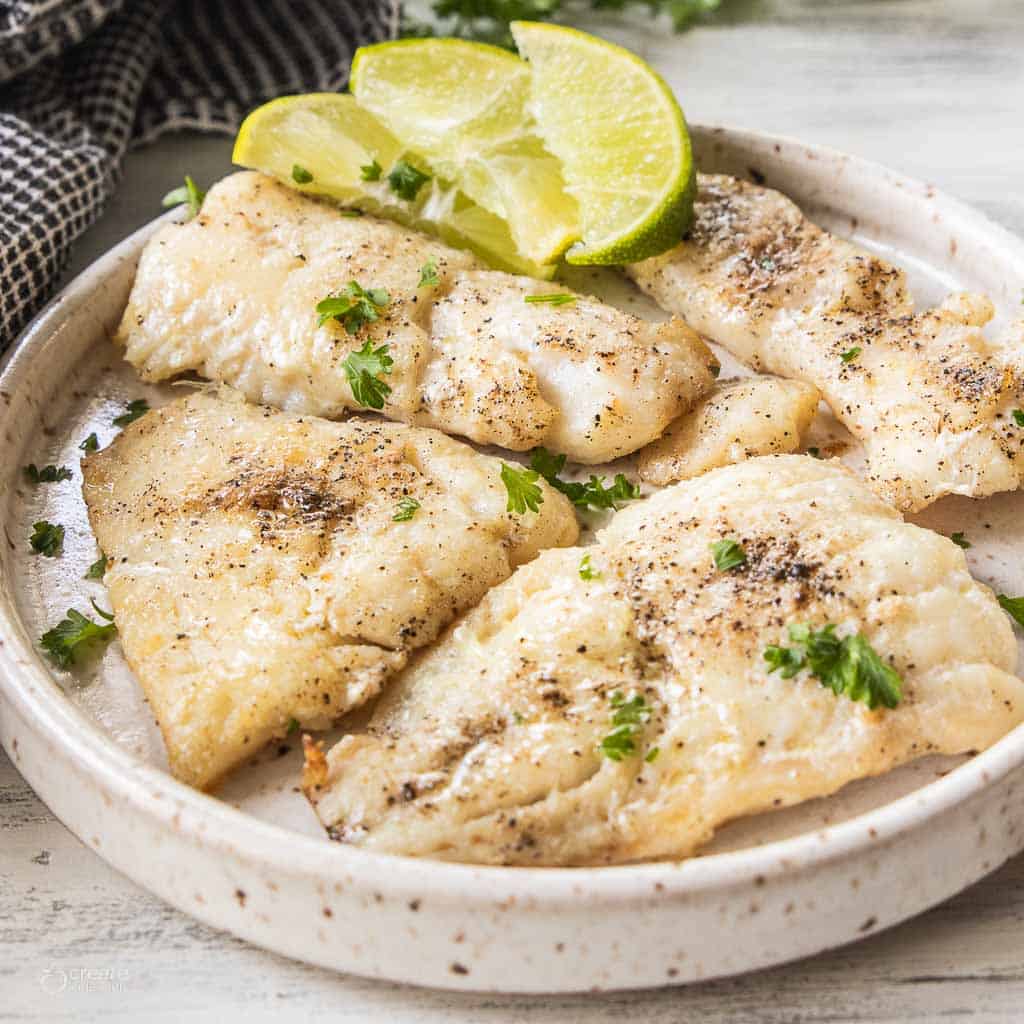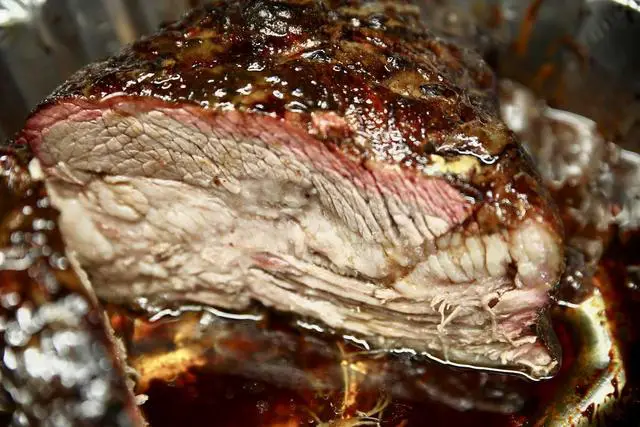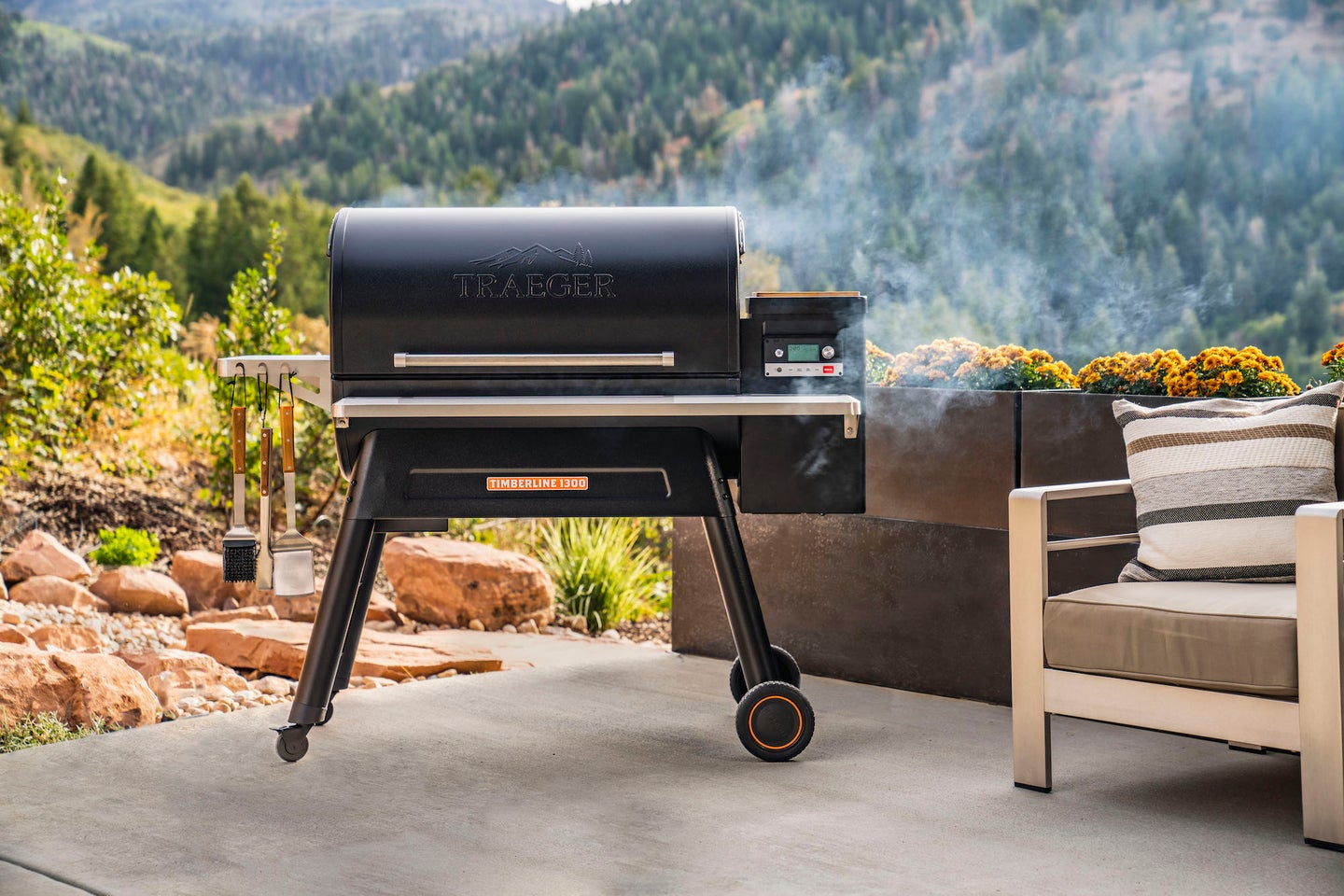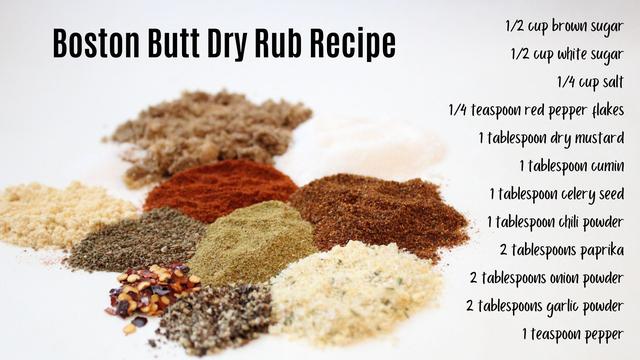
“Discover the Ultimate Flavor Enhancer – Best Boston Butt Rub! Elevate your BBQ experience with our carefully crafted blend of spices and seasonings. Perfectly designed to bring out the rich, smoky flavors in your Boston butt, this rub guarantees a mouthwatering taste sensation every time. Whether you’re a seasoned pitmaster or just starting out, our award-winning formula will take your BBQ to the next level. Get ready to impress and savor the best Boston butt you’ve ever had!”
Best Rub for Pork Butt (Pulled Pork): Ingredients Explained
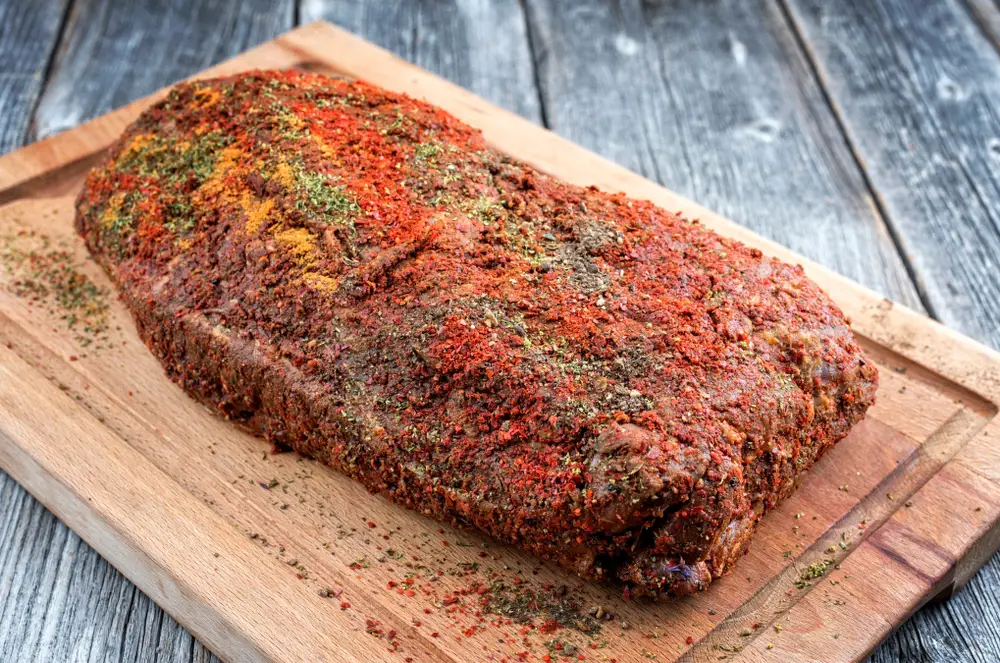
When it comes to creating the best rub for pork butt, there are a few key ingredients that are commonly used. Most pork rubs include a combination of sweet, savory, and sometimes spicy ingredients. The goal with pork is usually to achieve a sweet flavor that pairs well with the natural taste of the meat.
One important ingredient in a pork rub is pepper. While black pepper is commonly used, you can also experiment with different types such as purple peppercorns or white peppercorns. The coarseness of the ground pepper, known as “mesh” size, impacts how pungent the pepper is. Freshly cracked peppercorns are more pungent than 16 mesh and table ground black pepper.
Sugars are another essential component of a pork rub. A combination of white sugar and brown sugar works well with pulled pork. Turbinado sugar can also be used, but it may require a binder like mustard to keep it on the meat. Brown sugar adds more molasses flavor, while white sugar caramelizes faster and creates a better bark.
Salt is an important ingredient in any barbecue rub as it enhances the natural flavor of the meat. Kosher salt is commonly used because it doesn’t contain additives like anti-caking agents found in table salt. Diamond Crystal kosher salt is preferred by culinary professionals for its pure salt content, while Morton’s kosher salt is cheaper but contains an anti-caking agent. It’s recommended to salt the meat separately before applying the dry rub ingredients.
Some people like to add heat to their pork rubs, using ingredients like cayenne, chipotle, chili powder, or red pepper flakes. However, it’s important to consider your audience’s preference for heat when adding spicy elements to the rub.
Lastly, paprika is often included in commercial pork rubs for color purposes. It’s best to use high-quality paprika from Spain, Turkey, or Hungary for flavor. Smoked paprika can also be used to add a smoky flavor if you don’t have a smoker.
Overall, creating the best rub for pork butt involves a balance of sweet, savory, and sometimes spicy ingredients that complement the natural flavors of the meat.
What Ingredients Make a Good Pork Butt Rub (for Pulled Pork)
A good pork butt rub for pulled pork should include a balance of sweet, savory, spicy, and smoky flavors. The sweet element can come from ingredients like white sugar, brown sugar, turbinado sugar, or maple sugar. The savory aspect is usually achieved through the use of salt (such as kosher salt), pepper (either freshly cracked or table ground), garlic powder, and onion powder. For those who enjoy some heat in their rubs, adding cayenne pepper, chipotle powder, chili powder, or red pepper flakes can provide the desired spiciness.
In addition to these ingredients, paprika is often included in pork rubs for both flavor and color. It is important to choose high-quality paprika sourced from Spain, Turkey, or Hungary to ensure it imparts a distinct flavor. Smoked paprika can also be used to add a smoky taste if you do not have access to a smoker.
To create a good homemade pork butt rub for pulled pork, combine the listed ingredients in the specified quantities. This recipe includes dark brown sugar, white sugar, sweet paprika (preferably from Burlap and Barrel), garlic powder, table ground black pepper, and onion powder. Be sure to apply the rub before cooking the pork butt and allow it to sit for some time to enhance the flavors.
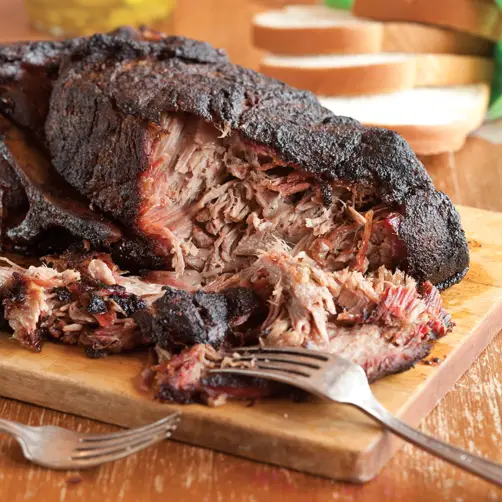
Let’s Talk Pepper
When it comes to choosing the right pepper for your pork butt rub, there are a few options to consider. Most people in the barbecue world tend to use black pepper, but you can also experiment with other varieties such as purple peppercorns or white peppercorns. The coarseness of the ground pepper, known as “mesh,” is an important factor in determining its pungency. Freshly cracked peppercorns are more pungent than 16 mesh, and 16 mesh is more pungent than table ground pepper. For pork, table ground black pepper is often preferred for its flavor profile.
There are various types of sugars that can be used in a pork butt rub, including turbinado sugar, dark brown sugar, white sugar, maple sugar, and honey granules. A combination of white sugar and brown sugar is commonly used for pulled pork due to their availability and taste. Turbinado sugar can also be a great addition to rubs, but it may require a binder like mustard to help it adhere to the meat. The choice between white and brown sugar depends on personal preference – brown sugar has more molasses and tastes better, while white sugar caramelizes faster and creates a better bark.
Salt is an essential ingredient in any barbecue rub as it helps enhance the natural flavor of the meat. Kosher salt is often preferred over table salt due to its coarse grains which allow for better distribution and flavor enhancement. Two popular brands of kosher salt are Morton’s and Diamond Crystal. Culinary professionals recommend using Diamond Crystal because it does not contain any additives that may impart a bitter taste like Morton’s does. When using kosher salt in a rub, it is recommended to apply it separately on all sides of the meat before adding other dry rub ingredients.
While heat is not typically applied in the initial pork butt rub, some people may choose to add spicy ingredients to their rubs. The choice of heat depends on personal preference and the preferences of your audience. Common options include cayenne, chipotle, chili powder, or red pepper flakes. However, it is important to consider everyone’s taste preferences and offer a separate finishing sauce with heat for those who enjoy spicy flavors.
Paprika is a common ingredient found in many commercial pork rubs, but not all paprikas are created equal. Cheap store-brand paprika may not impart much flavor and is primarily used for color purposes. To achieve both flavor and color in your rub, look for paprikas sourced from Spain, Turkey, or Hungary as these tend to have more flavor. Sweet paprika is often preferred for pulled pork rubs, but smoked paprika can also be used to add a smoky flavor if you do not have access to a smoker.
By understanding the role of each ingredient in a pork butt rub, you can create a customized blend that suits your taste preferences and enhances the flavor of your pulled pork.
Pepper Mesh Size
In creating a pork butt rub, the size of the ground pepper, or “mesh” size, is crucial in determining its pungency. Most commonly, black pepper is used in barbecue rubs. However, experimenting with other varieties such as purple or white peppercorns can add unique flavors to the final product. The mesh size affects the surface area and rate of evaporation of the pepper compounds. Freshly cracked peppercorns are more pungent than 16 mesh, and 16 mesh is more pungent than table ground black pepper. For pork butt, table ground black pepper is preferred for a balanced flavor.
When it comes to sugars in a pork butt rub, a combination of white sugar and brown sugar works best. Dark brown sugar provides a richer flavor due to its higher molasses content, while white sugar caramelizes faster and creates a better bark on the meat. Turbinado sugar can also be used for its taste and mixing properties. However, most people have dark brown sugar and white sugar readily available in their pantries. It’s important to be mindful of not burning the sugars during cooking as it can result in bitterness and ruin the bark.
Salt plays a crucial role in enhancing the natural flavor of pork when used in a rub. Kosher salt is commonly recommended over table salt due to its coarse grains that allow for better seasoning distribution and flavor improvement. Morton’s and Diamond Crystal kosher salt are popular brands used in culinary applications. Diamond Crystal, which contains only salt without any additives, is preferred by professionals for its cleaner taste. However, Morton’s kosher salt is denser and more affordable for those who don’t notice a significant difference in taste.
The addition of spicy ingredients in a pork butt rub depends on personal preference and the taste preferences of your audience. Cayenne, chipotle, chili powder, or red pepper flakes are common choices for bringing heat to the rub. However, it’s important to consider your guests’ spice tolerance. The option of incorporating heat is often left for later stages in the cooking process, such as creating a table sauce or finishing sauce where hot sauce and vinegar are combined. This allows individuals to control the level of spiciness in their servings.
Most commercial pork rubs include paprika primarily for color purposes rather than flavor enhancement. Therefore, it’s essential to choose high-quality paprika from Spain, Turkey, or Hungary that offers distinct flavors. Cheap store-brand paprika may lack flavor and should be avoided unless solely used for color. Smoked paprika can add a smoky flavor profile similar to that achieved through smoking on a grill or smoker. It’s important to note that paprika can also come in hot or spicy variations, so selecting the appropriate type based on desired heat levels is crucial.
Let’s Talk Sugar

When it comes to choosing the right sugar for your pork butt rub, there are several options to consider. Some popular choices include turbinado sugar, dark brown sugar, white sugar, maple sugar, and honey granules. However, my personal preference for pulled pork is a combination of equal parts white sugar and brown sugar.
Using brown sugar in the rub adds a rich and deep flavor due to its higher molasses content. On the other hand, white sugar caramelizes faster when cooked, creating a delicious bark on the meat. By combining these two sugars, you get the best of both worlds – great taste and a beautiful crust on your pulled pork.
While turbinado sugar is also a fantastic option that mixes well in the shaker and tastes wonderful, it may not be as commonly found in every pantry. Dark brown sugar and white sugar are more widely available ingredients that most people already have on hand.
It’s important to note that when using sugars in your rub, be mindful of cooking temperatures. If you’re cooking at high temperatures (325°F+), there is a risk of burning the sugars, especially white sugar. Burned sugar can result in a bitter taste and ruin the bark on your pulled pork.
Ultimately, the choice of sugars in your pork butt rub will depend on your personal preference and what flavors you enjoy. Feel free to experiment with different types of sugars to find what works best for you.
Let’s Talk Salt
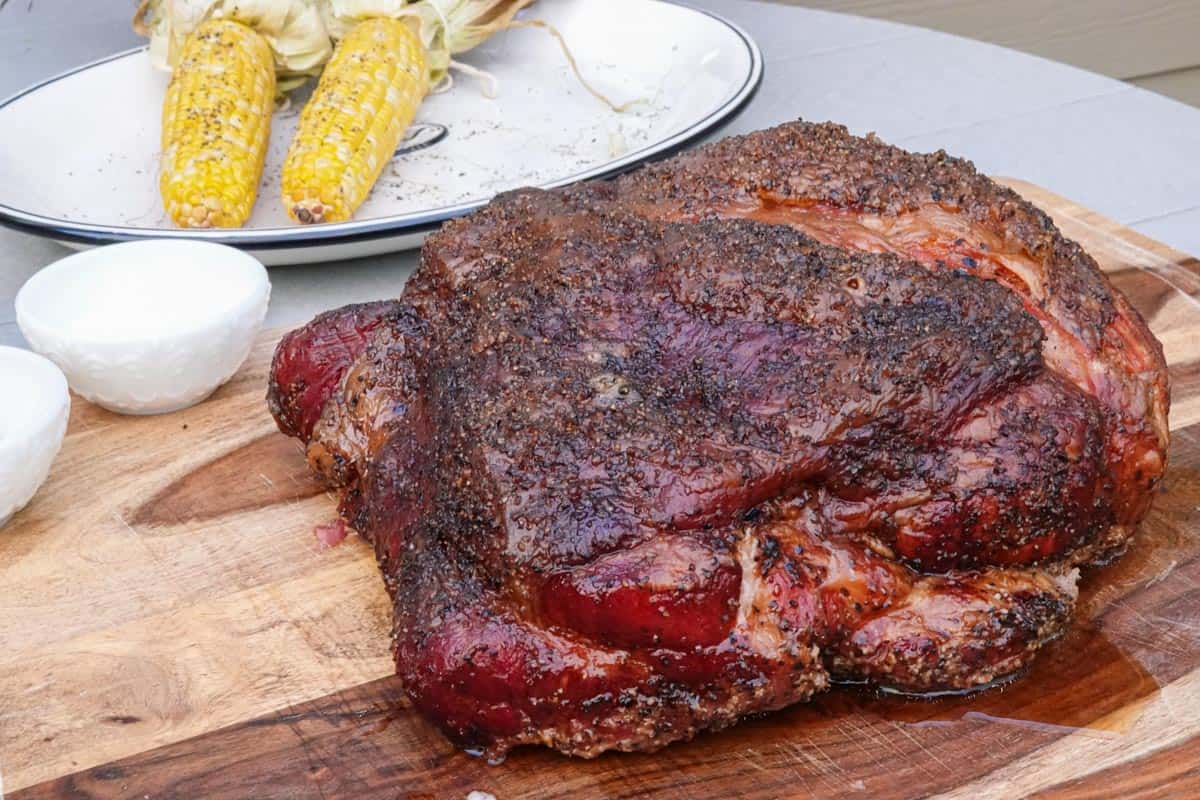
Salt is an essential ingredient in any pork butt rub for pulled pork. It helps to enhance the natural flavor of the meat and adds depth to the overall taste. When it comes to choosing salt for your rub, it’s important to consider the type and brand.
Most recipes will call for kosher salt, with two popular brands being Morton’s and Diamond Crystal. Diamond Crystal is preferred by culinary professionals because it contains only salt, without any anti-caking agents that some believe can impart a bitter taste. However, Morton’s is a more affordable option and works well if you don’t taste a difference.
When using kosher salt, it is recommended to salt the meat first before applying the dry rub ingredients. This allows for better control over the amount of salt used. If you prefer to mix the salt into the rub, opt for Diamond Crystal as its granule properties make it easier to blend with other ingredients.
Avoid using table salt in your rub as it is denser than kosher salt and has smaller granules. Table salt simply makes food taste salty without enhancing its flavor. Additionally, table salt may leave a bitter aftertaste and lacks the coarse grains that improve the taste of the meat.
To create a delicious pork butt rub for pulled pork, you’ll want to combine various ingredients that provide sweetness, savory flavors, spiciness, and paprika for color. Here’s a simple recipe:
– 2 tablespoons dark brown sugar
– 2 tablespoons white sugar
– 1 tablespoon sweet paprika (preferably sourced from Spain, Turkey, or Hungary)
– 1 tablespoon garlic powder
– 1 tablespoon table ground black pepper
– 1/2 tablespoon onion powder
Mix these ingredients together in the listed quantities. This amount should be enough for approximately a 4-6 pound pork butt. Apply the rub evenly on all sides of the meat, ensuring thorough coverage.
Experimenting with different combinations and quantities of these ingredients can help you find your preferred flavor profile. Remember to be mindful of the amount of sugar used, as high heat during cooking can cause it to burn and create a bitter taste. The bark, or outer crust, created by the rub is one of the highlights of pulled pork, so take care not to overcook or burn it.
By making your own pork butt rub at home, you can save money compared to store-bought options while tailoring the flavors to your liking.
Morton’s vs Diamond Crystal Kosher Salt
When it comes to choosing between Morton’s and Diamond Crystal kosher salt for your pork butt rub, there are a few things to consider. Morton’s kosher salt contains an anti-caking agent, which some people believe can give the salt a bitter taste. On the other hand, Diamond Crystal kosher salt is pure salt without any additives. Culinary professionals often recommend using Diamond Crystal because of its clean taste.
If you prefer to have more control over the amount of salt in your rub, you may choose to salt the meat first and then apply the dry rub ingredients. In this case, using Morton’s kosher salt may be more suitable as it is denser than Diamond Crystal. However, if you prefer to mix your salt into the dry rub ingredients, Diamond Crystal is recommended because its granules mix better compared to Morton’s.
It’s important to note that if a recipe specifies a certain brand of kosher salt and you have a different brand on hand, you may need to adjust the amount used. For example, if a recipe calls for Morton’s and you only have Diamond Crystal, you will need to use double the amount specified. Conversely, if a recipe uses Diamond Crystal and you have Morton’s, halve the amount.
In summary, both Morton’s and Diamond Crystal kosher salts can be used in your pork butt rub. The choice ultimately depends on personal preference and whether you prioritize purity or control over salting method.
Why Not Table Salt?
Table salt is not recommended for use in a pork butt rub because it is denser than kosher salt and has smaller granule size. The coarse grains of kosher salt allow for better flavor enhancement, while table salt simply makes the food taste salty. Additionally, table salt may leave a bitter aftertaste and can overpower the other flavors in the rub. It is also important to note that table salt typically contains iodine, which some people find leaves a less desirable aftertaste compared to non-iodized salts.
Salt is an essential ingredient in a pork butt rub as it helps to enhance the natural flavor of the meat. It also aids in tenderizing the meat and promoting moisture retention during the smoking process. When applying salt to a pork butt, it is recommended to either salt the meat first before applying other dry rub ingredients or mix kosher salt into the dry rub ingredients separately. This allows for better control over the amount of salt used and ensures even distribution on all sides of the meat.
Paprika adds color and flavor to a pork butt rub, but it’s important to choose high-quality paprika that actually imparts flavor. Many commercial pork rubs use low-grade paprika solely for color purposes. Look for varieties of paprika that list their country of origin as Spain, Turkey, or Hungary, as these tend to have more flavorful options. Sweet paprika is commonly used in pork butt rubs, but smoked paprika can also add a smoky flavor if you don’t have access to a smoker.
Let’s Talk Heat
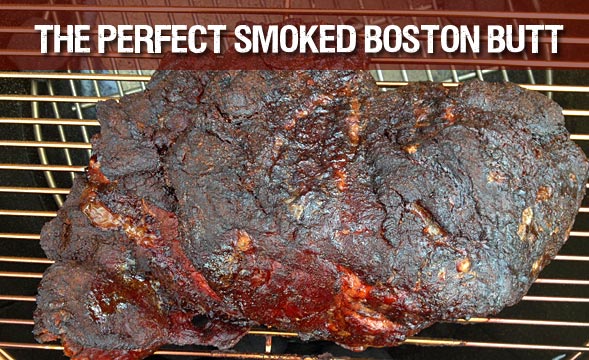
When it comes to adding heat to your pork butt rub, it’s important to consider your audience. If you and your friends and family enjoy spicy flavors, then go ahead and add some form of heat to the rub. This can be cayenne pepper, chipotle powder, chili powder, or red pepper flakes. However, if there are people who don’t like spicy food in your group, you may want to hold off on adding heat to the rub. Instead, you can create a separate “table sauce” or “finishing sauce” with hot sauce and vinegar or chilies/vinegar for those who want a bit of heat in their pulled pork.
Most commercially available pork rubs include paprika for its color-enhancing properties. However, many of these rubs use low-grade paprika that lacks flavor. To ensure that your rub has both color and flavor, it’s best to use high-quality paprika from Spain, Turkey, or Hungary. These countries are known for producing flavorful paprika varieties. For sweet and smoky flavors, you can opt for smoked paprika. Just be mindful of different levels of spiciness when choosing your paprika.
To create the perfect pork butt rub, combine the following ingredients in the listed quantities: 2 tablespoons dark brown sugar, 2 tablespoons white sugar, 1 tablespoon sweet paprika (such as Burlap and Barrel), 1 tablespoon garlic powder, 1 tablespoon table ground black pepper (or freshly cracked peppercorns), and 1/2 tablespoon onion powder. Mix all the ingredients together thoroughly before applying it to your pork butt.
Remember that taste preferences can vary, so feel free to adjust the quantities of each ingredient according to your personal preference. Experimenting with different combinations of sweet, savory, spicy, and smoky flavors will help you find the perfect balance for your pulled pork. Just be mindful of the pungency of certain ingredients like black pepper and the potential for burning sugar at higher cooking temperatures. With some trial and error, you’ll be able to create a delicious homemade pork butt rub that rivals any commercial rub on the market.
Let’s Talk Paprika
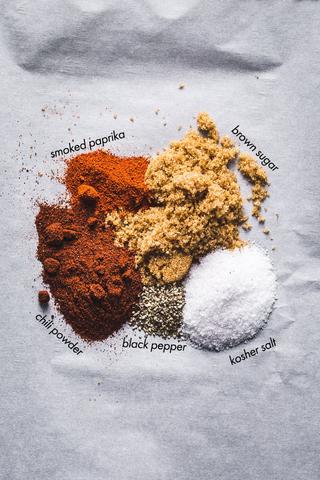
Paprika is an essential ingredient in many pork rubs, adding flavor and color to the meat. However, not all paprikas are created equal. Commercial pork rubs often use low-grade paprika that lacks flavor and is primarily used for its vibrant red color. To truly enhance the taste of your pulled pork, it is important to choose high-quality paprika.
When selecting paprika for your pork rub, look for varieties that list their country of origin as Spain, Turkey, or Hungary. These regions are known for producing paprikas with rich flavors that will elevate your dish. Burlap and Barrel offers both smoked and sweet paprika options, with the latter being more suitable for pulled pork.
If you don’t own a smoker, using smoked paprika can add a delightful smoky flavor to your dish. However, be mindful of the type of paprika you choose as it can also vary in heat level. Consider your personal preference and the preferences of those you are serving when selecting a paprika with the appropriate level of spiciness.
Incorporating high-quality paprika into your pork rub will ensure that every bite of pulled pork is bursting with flavor and visually appealing. Don’t settle for cheap store-brand versions that offer little taste; invest in quality paprika to take your pulled pork to the next level.
Pulled Pork (Pork Butt) Dry Rub
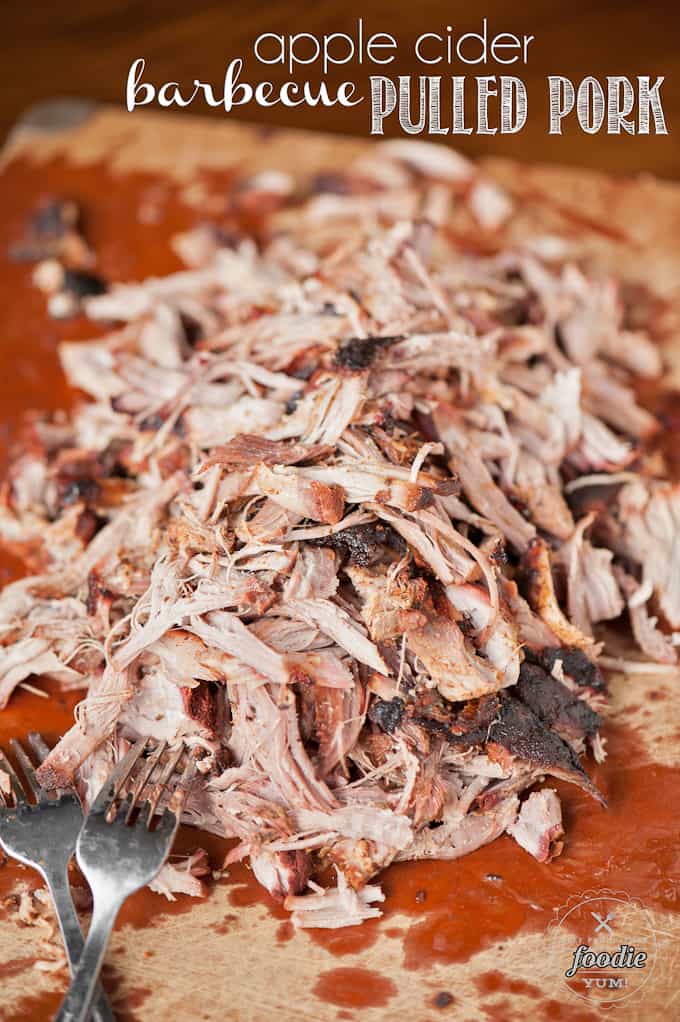
When it comes to making a dry rub for pulled pork, there are a few key ingredients that you’ll want to include. The first is sweetness, which can be achieved with white sugar, brown sugar, turbinado sugar, or even Stevia or maple sugar. This sweetness pairs well with the natural flavor of pork.
The second important component is savory flavors, which typically come from salt and pepper. Kosher salt is commonly used in barbecue recipes because it helps enhance the natural flavor of the meat. When it comes to pepper, most people use black pepper in their rubs, but you can also experiment with different varieties like purple peppercorns or white peppercorns.
In addition to sweetness and savory flavors, some people like to add a bit of spice to their rubs. This can come from ingredients like cayenne pepper, chipotle powder, chili powder, or red pepper flakes. However, it’s important to consider your audience’s preference for heat when deciding how much spice to add.
Lastly, paprika is often included in commercial pork rubs for color purposes. However, it’s important to use high-quality paprika that actually imparts flavor. Look for varieties from Spain, Turkey, or Hungary instead of cheaper store-brand options.
Ingredients
When making a rub for pork butt (pulled pork), there are several key ingredients to consider:
– Sweet: This can be achieved with sugar, such as white sugar, brown sugar, turbinado sugar, Stevia, or maple sugar.
– Savory: Salt is the main savory ingredient in a rub. You can use kosher salt, flaky salt, or table salt. Pepper is also essential and can be in the form of 16-mesh pepper, table ground pepper, or freshly cracked peppercorns. Garlic powder and onion powder are other common savory ingredients.
– Spicy: Some people like to add heat to their rubs using ingredients like cayenne pepper, chipotle powder, chili powder, or red pepper flakes.
– Paprika: Most commercial pork rubs use low-grade paprika for color purposes. However, if you want flavor as well, look for paprika from Spain, Turkey, or Hungary.
– Piperine: This alkaloid is responsible for the pungency of black pepper.
– Terpenes: These compounds give plants their distinct aroma.
To create a basic pork butt rub:
- Apply Diamond Crystal Kosher Salt to the pork butt before adding the dry rub. This ensures that the entire cut of meat is properly salted.
- Salt the pork butt separately on all sides to ensure even distribution of salt.
- Mix together the following ingredients in the specified quantities: 2 tablespoons dark brown sugar, 2 tablespoons white sugar, 1 tablespoon Burlap and Barrel sweet paprika,1 tablespoon garlic powder,1 tablespoon table ground black pepper,and 1/2 tablespoon onion powder.This amount is suitable for a 4-6 lb pork butt.
Pork Butt Dry Rub
As someone who has smoked thousands of pounds of pork butt, I’ve tested numerous commercial pork rubs and found that they all contain a combination of sweet, savory, and sometimes spicy ingredients. However, instead of spending money on these rubs, you can easily make your own for a fraction of the cost. When it comes to pork butt rubs, the goal is typically to achieve a sweet flavor that pairs well with the natural taste of pork.
One important ingredient in pork rubs is pepper. Most people use black pepper, but you can experiment with different options like purple or white peppercorns. The coarseness of the ground pepper, also known as “mesh,” affects the pungency of the pepper. Freshly cracked peppercorns are more pungent than 16 mesh and table ground black pepper. For pork, table ground black pepper is recommended.
Sugar is another key ingredient in pork butt rubs. A combination of white sugar and brown sugar works best for pulled pork. Turbinado sugar can also be used, but it tends to fall off the meat more easily. Brown sugar has a richer taste due to its higher molasses content, while white sugar caramelizes faster and creates a better bark.
Salt is commonly included in barbecue rubs to enhance the natural flavor of the meat. Kosher salt is preferred over table salt due to its coarse grains and lack of additives like anti-caking agents. Morton’s and Diamond Crystal are popular brands of kosher salt, with Diamond Crystal being preferred by culinary professionals due to its purity.
Spicy ingredients can be added to pork rubs depending on personal preference or your audience’s taste for heat. Common examples include cayenne, chipotle, chili powder, or red pepper flakes. Some people prefer to add heat later through a finishing sauce rather than incorporating it into the dry rub.
Paprika is often used in commercial pork rubs for color, but it can also add flavor. It’s important to choose high-quality paprika from Spain, Turkey, or Hungary for the best taste. Smoked paprika can be used to achieve a smoky flavor if you don’t have a smoker.
To make your own pork butt dry rub, combine the following ingredients in the listed quantities: 2 tablespoons dark brown sugar, 2 tablespoons white sugar, 1 tablespoon sweet paprika (preferably Burlap and Barrel), 1 tablespoon garlic powder, 1 tablespoon table ground black pepper, and 1/2 tablespoon onion powder. Apply the rub before smoking or grilling the pork butt for optimal flavor.
Overall, creating your own pork butt dry rub allows you to customize the flavors and save money compared to buying commercial rubs. Experiment with different ingredients and quantities to find your perfect combination.
Salt
Salt is an essential ingredient in any pork butt rub. It helps to enhance the natural flavor of the meat and brings out its savory qualities. When it comes to choosing salt for your rub, it is recommended to use kosher salt rather than table salt. Kosher salt, specifically brands like Morton’s or Diamond Crystal, are commonly used due to their coarse granules and pure salt content. However, Diamond Crystal is preferred by culinary professionals as it does not contain any anti-caking agents that can leave a bitter taste. If using Morton’s kosher salt instead of Diamond Crystal, double the amount specified in the recipe.
Sweetness plays an important role in a pork butt rub as it complements the inherent flavors of the meat. A combination of white sugar and brown sugar is commonly used in homemade rubs. Brown sugar adds a rich molasses flavor, while white sugar caramelizes faster and creates a desirable bark on the meat. Turbinado sugar can also be used for its unique taste and ability to mix well with other ingredients. Experimentation with different types of sugars can help you find your preferred balance of sweetness in the rub.
Paprika adds color and flavor to a pork butt rub. It is important to choose high-quality paprika from Spain, Turkey, or Hungary for optimal taste. Many commercial rubs use low-grade paprika solely for color purposes, so it is recommended to avoid cheap store-brand options if seeking flavor enhancement. Smoked paprika can also be used to add a smoky element if you do not have access to a smoker.
While heat is not typically applied until later in the cooking process with pulled pork, some people prefer spiciness in their rubs. Common spicy ingredients include cayenne pepper, chipotle, chili powder, or red pepper flakes. It is important to consider your audience’s preference for heat when deciding whether to include spicy elements in the rub.
In addition to salt, sugar, paprika, and spice, other ingredients like garlic powder and onion powder can be included in a pork butt rub for added savory flavors. These ingredients contribute to the overall taste profile and enhance the complexity of the rub. Experimentation with different ratios and combinations can help you find the perfect balance for your desired flavor profile.
Instructions
1. Start by salting the pork butt separately on all sides with Diamond Crystal Kosher Salt. This ensures that the entire cut is properly salted.
2. In a bowl, combine the following ingredients in the specified quantities: 2 tablespoons of dark brown sugar, 2 tablespoons of white sugar, 1 tablespoon of Burlap and Barrel Sweet Paprika, 1 tablespoon of garlic powder, 1 tablespoon of table ground black pepper, and 1/2 tablespoon of onion powder.
3. Mix the ingredients together until well combined.
4. Apply the rub generously to the pork butt, making sure to cover all sides evenly.
5. Let the pork butt sit for at least an hour to allow the flavors to penetrate the meat.
6. Prepare your smoker or grill for indirect cooking at a temperature of around 225°F.
7. Place the pork butt on the smoker or grill and cook until it reaches an internal temperature of 195-205°F, which usually takes about 1 hour per pound.
8. Once cooked, remove the pork butt from the smoker or grill and let it rest for about 30 minutes before shredding it with forks or meat claws.
9. Serve the pulled pork as desired, whether it’s on sandwiches, tacos, or just on its own.
Note: Adjustments can be made to the quantities of each ingredient based on personal preference and taste preferences. Experiment with different combinations to find your perfect blend!
In conclusion, when it comes to achieving mouthwatering flavors and tender, juicy Boston butt, finding the best rub is essential. Whether you prefer a blend of spices or a tangy BBQ sauce, experimenting with different combinations can elevate your cooking to new heights. So go ahead, explore the options and let your taste buds be the judge of the ultimate Boston butt rub that will leave your guests asking for seconds every time.
Learn More About Grilling
If you want to learn more about grilling, check out these other helpful resources!

